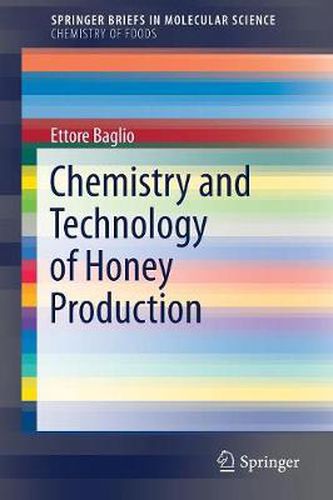Readings Newsletter
Become a Readings Member to make your shopping experience even easier.
Sign in or sign up for free!
You’re not far away from qualifying for FREE standard shipping within Australia
You’ve qualified for FREE standard shipping within Australia
The cart is loading…






This title is printed to order. This book may have been self-published. If so, we cannot guarantee the quality of the content. In the main most books will have gone through the editing process however some may not. We therefore suggest that you be aware of this before ordering this book. If in doubt check either the author or publisher’s details as we are unable to accept any returns unless they are faulty. Please contact us if you have any questions.
This Brief explains and discusses honey and its production from a chemical perspective. It outlines why honey is a special and unique food, being produced by bees from the nectar of plants or from secretions of living parts of plants. Although glucose and fructose are the main constituents of honey, its overall composition is far from being simple or uniform: other substances such as organic acids, enzymes, or minerals are found in varying amounts.
In this Brief, the author addresses the factors that influence the composition of the honey as well as the consequences that the composition has on properties such as color, crystallization, density, viscosity, or the refractive index. This Brief also introduces some of the most commonly used quality parameters for the determination of ageing and/or overheating: 5-hydroxymethylfurfural (HMF) and diastase. Other recently proposed constituents for quality parameters are also mentioned, e.g. 1,2 dicarbonyl compounds (3 deoxyglucosone, methylglyoxal, glyoxal) and furosine, also named 2-furoylmethyl lysine.
$9.00 standard shipping within Australia
FREE standard shipping within Australia for orders over $100.00
Express & International shipping calculated at checkout
This title is printed to order. This book may have been self-published. If so, we cannot guarantee the quality of the content. In the main most books will have gone through the editing process however some may not. We therefore suggest that you be aware of this before ordering this book. If in doubt check either the author or publisher’s details as we are unable to accept any returns unless they are faulty. Please contact us if you have any questions.
This Brief explains and discusses honey and its production from a chemical perspective. It outlines why honey is a special and unique food, being produced by bees from the nectar of plants or from secretions of living parts of plants. Although glucose and fructose are the main constituents of honey, its overall composition is far from being simple or uniform: other substances such as organic acids, enzymes, or minerals are found in varying amounts.
In this Brief, the author addresses the factors that influence the composition of the honey as well as the consequences that the composition has on properties such as color, crystallization, density, viscosity, or the refractive index. This Brief also introduces some of the most commonly used quality parameters for the determination of ageing and/or overheating: 5-hydroxymethylfurfural (HMF) and diastase. Other recently proposed constituents for quality parameters are also mentioned, e.g. 1,2 dicarbonyl compounds (3 deoxyglucosone, methylglyoxal, glyoxal) and furosine, also named 2-furoylmethyl lysine.